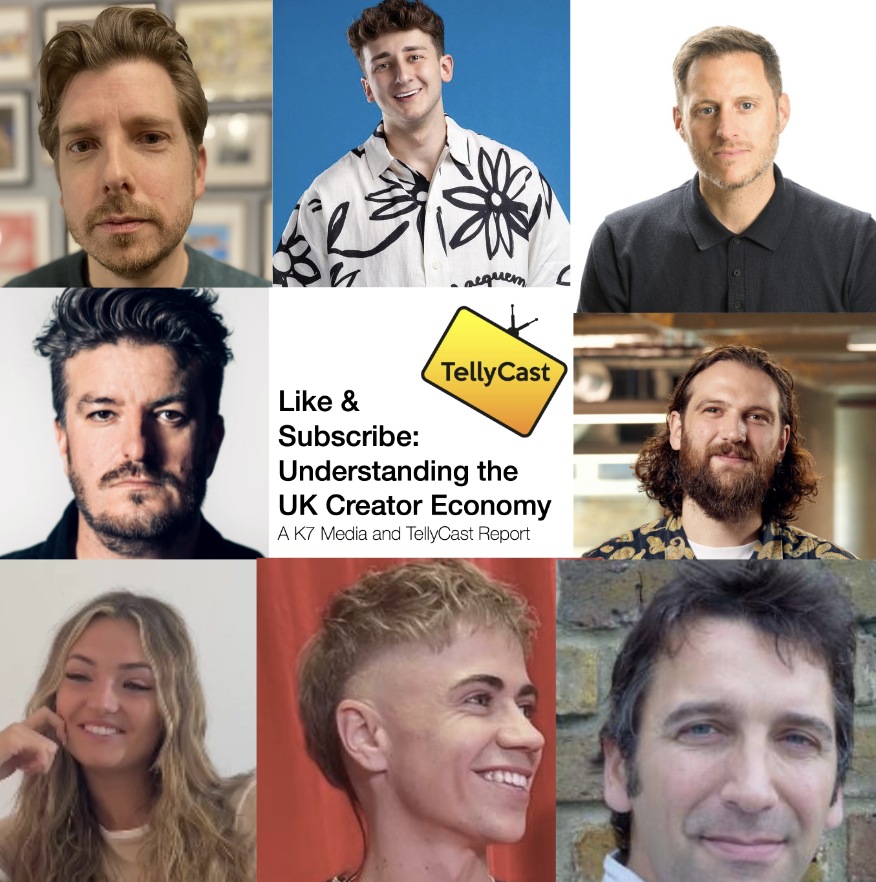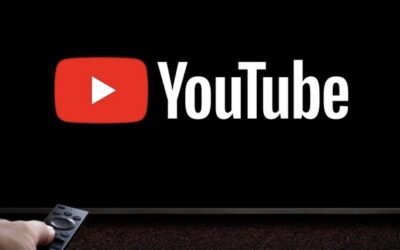This month, The Drop’s sister platform TellyCast joined forces with K7 Media to launch a new report about the digital content ecosystem. Entitled Like & Subscribe: Understanding the UK Creator Economy, the report set out to provide a broad insight into this captivating and constantly evolving sector. For this week’s edition of the Download, we’ve cherry-picked some of the report’s key observations – including comments from industry thought-leaders interviewed for the publication.
Innovative but unpredictable: One of the report’s key findings was that the creator economy is yet to reach full maturity. “Production,” it concluded, “is faster and more agile (than TV), able to adapt to changes in audience far more quickly than any linear broadcaster or streaming platform. Yet the rules and norms that are largely settled in traditional media are still turbulent and ever-changing in the creator economy. It is a field where a lot of money can be made very quickly for those who move boldly and early but can also leave creators – and their backers – exposed just as swiftly.”
Monetisation is still a challenge for many: All the talk in 2023 has been about platforms trying to attract creators with more lucrative monetisation models. But with a few high-profile exceptions, it’s still tough to make a living as a creator. TellyCast and K7’s assessment is that: “If we look beyond the industry’s top earners (who arguably give us an unrealistic view of what’s possible), it’s clear that a mix of income sources is the reality for most creators. These creators utilise multiple revenue models to monetise their social audiences – directly on platforms, as well as via Adsense, subscriptions, brand deals, paid shout-outs, and direct tips or donations.”
Audiences are volatile: At one level, engaging with social audiences is the same as engaging with TV audiences, says Future Studios chief creative officer Jon Farrar: “You have to identify market opportunities, identify the trends, identify the things the buyers are looking for”. However, there is an additional complication, because the audience is “vast” and “very fickle”. Creators can “get the audience to turn up to [online content] but the main challenge is how can we get the audience to stay”.
Platform logistics are challenging: Most creators favour YouTube or TikTok, but there are probably 8-10 platforms on their radars, ranging from Facebook to Pinterest to Snapchat. Keeping on top of this platform ecosystem is one of the biggest challenges, says Spirit Studios creative director Matt Campion: “Every new platform like TikTok rewrites the script for how audiences consume video, and therefore the way in which creators need to change the way they go about making it.” Campion adds that another key consideration for anyone entering the creator economy is that “it’s only going to get more crowded. Like anything, you have to stand out in the crowd, so the discipline of content creation means you have to be on top of what’s popular.”
Creators in two minds over TV: Hang around creators long enough and you’ll hear two conflicting narratives. One is that social media is a distinct form in its own right and has nothing in common with TV. The other is that social media can act as a stepping stone for creators into other media channels – as demonstrated by the likes of Joe Sugg and Joe Wicks. The reality, referenced in the report, is that both can be true. Creating sub-10 minute content for digital first audiences is a credible creative exercise in its own right. But very few creators would pass up the opportunity to produce a commissioned documentary or star in an ITV reality show. Creator Dylan Page told TellyCast/K7: “I’m very adaptable, my long term goal would be to do in-person interviews with bigger productions, perhaps with a camera crew on location.”
Digital-first democratises access: One area where social clearly has an advantage over TV is ease of access for new talent. While TV has a problem with a) recruitment nepotism and b) overusing the same talent, social has no gatekeepers (except its algorithms). Success is all about striking a chord with young online audiences – and this can be done on a tiny budget (at least initially). Creator Crystal Wright is particularly enthusiastic about short-form platform TikTok, where a creator can build “huge reach from nowhere”. In terms of accessibility, she says, “you don’t need to come from money or even know someone in the industry. You can just use your phone, create from anywhere and it’s got a chance to get you somewhere”.
An evolving ecosystem: As the creator economy matures, industry experts forecast a couple of key developments. Freelance producer Thom Gulseven believes creators will re-evaluate their roles – perhaps becoming digital first content commissioners or studio chiefs. An example of the latter is Brandon Baum, who used his success as a creator to launch his own production business Studio B. Another case in point is After Party Studios, launched by YouTuber Callux. After Party managing director Joshua Barnett told TellyCast/K7 that he expects more creator-fronted brand extensions, citing Callux’s NoTwoWays shoe company and KSI and Logan Paul’s Prime Hydration as examples. “Rather than simply work with, or be a face of, an existing product, why don’t (creators) start (their) own brand in an area (they are) passionate about?”
Community is a competitive edge: When it comes to social video, Cowshed Collective’s Matt Ford says community is often at the heart of the bigger success stories. This is illustrated the company’s content creation work with brands like Footasylum. FA built a YouTube brand around talent like Chunkz and Yung Filly, who featured regularly in different series on the channel – thus building audience familiarity. Community is often key to the multiple revenue streams referenced above.
To access the full ‘Like & Subscribe’ report, click here





